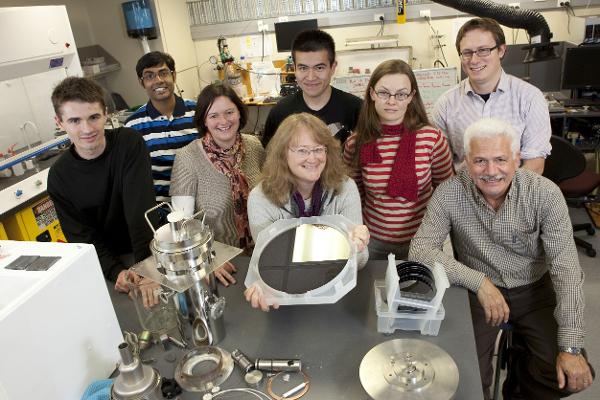AEMSLab Materials Projects
Thin Film Materials by Pulsed-Pressure Metalorganic Chemical Vapor Deposition (PP-MOCVD)
Thin film materials may actually define our technology age. Electronics, processors, sensors, communications, medical equipment... thin film devices are the difference between us and the past. In a strange irony, thin film materials are manufactured using some of the most dangerous chemicals and most energy intensive processes. Thin film solar cells based on GaAs require two of the most deadly reactive gasses that humans have ever developed for their manufacture.
Is it possible to manufacture thin film materials and devices without toxic precursor materials and with low energy requirements?
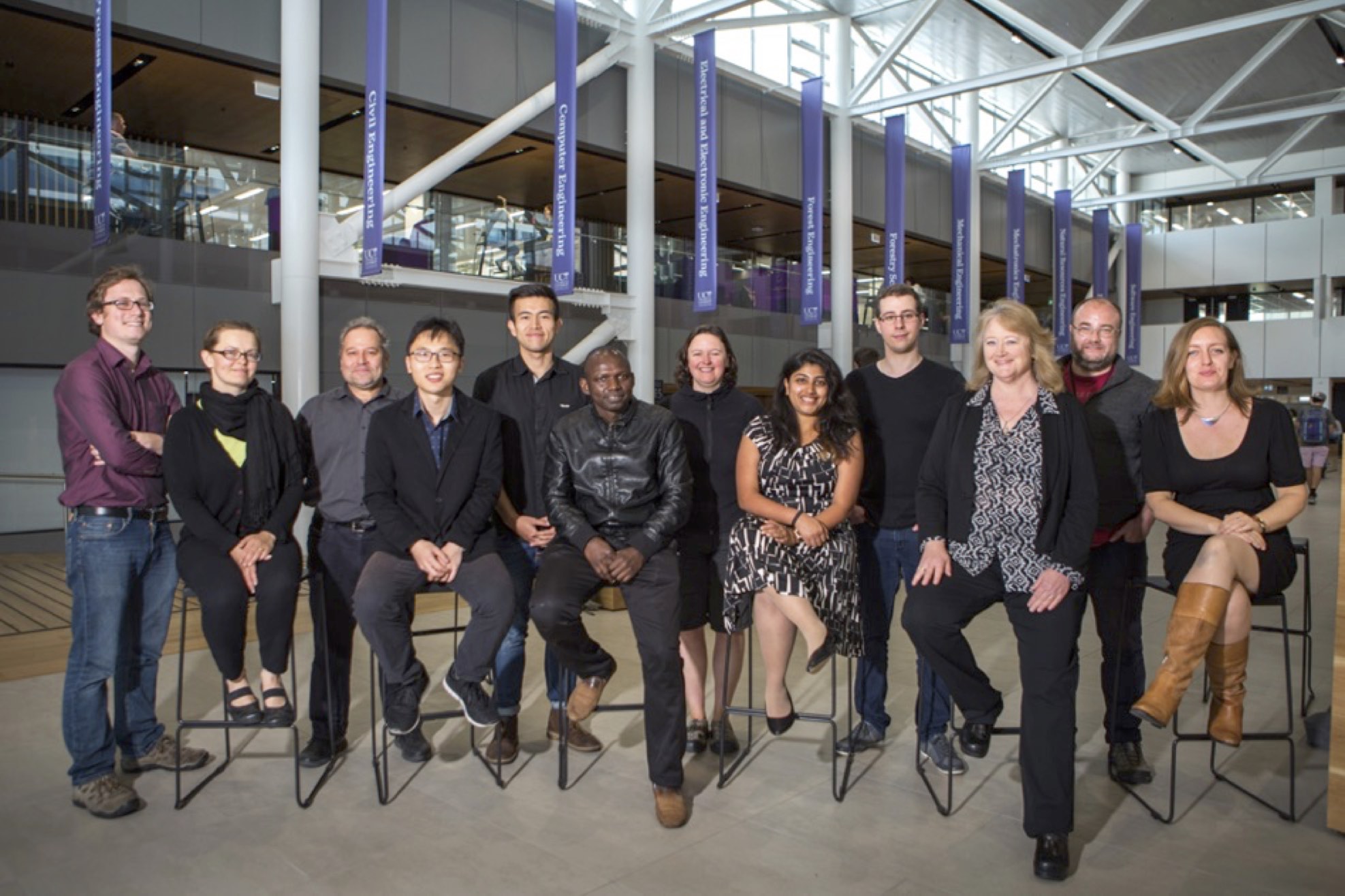
Antimicrobial Ceramic Coatings for Touch Surfaces
Major new research grant has been awarded 2015-2018 worth $1,014,000 to develop a durable ceramic antimicrobial coating for fittings in health care facilities to combat the rise of hospital acquired infections and super bugs.
The project will develop the industrially-relevant process that can apply a protective ceramic coating to metal objects - a "holy grail" of modern healthcare and advanced energy technologies. The process was invented by Professor Susan Krumdieck during her PhD thesis research in 1999 at University of Colorado, USA. It has since been developed into a platform technology with potential applications in industries such as health-care, air pollution, water purification, and electrochemical devices.
A group of students is working together on different aspects of the MBIE-funded project to develop a novel antimicrobial solid ceramic coating for hospital touch surfaces like door handles, bed rails and elevator buttons.
A multidisciplinary research team is working on further development of this platform for commercial products. The research team includes the following members of staff and collaborators:
- Prof. Susan Krumdieck, MECH, Director
- Dr. Catherine Bishop, MECH, modelling of materials
- Dr. Sarah Masters, Chemistry, modelling of precursor chemistry
- Dr. Tim Kimmett, Callaghan Innovations, TiO2 Coatings
- Dr. John Kennedy, GNS Science, Materials Science
- Dr. Matt Watson, CAPE, Processing Science
- Dr. Raphael Boichot, Grenoble INP, SIMAP, France, Processing Science
- Dr. Aleksandra Gardecka, MECH, Post-Doc
Chemical vapor deposition (CVD) is a high tech manufacturing process widely used in the electronics, sensors and optics industries. CVD is used to make thin layers of absolutely pure materials through what is essentially additive manufacturing at the atomic scale. CVD manufacturing is almost exclusively developed in well-funed advanced materials, chemistry and physics research labs in the USA and Europe.
Professor Krumdieck’s innovation unlocks the power of CVD for applications outside electronics by engineering a new kind of process control. The secret to the PP-MOCVD process is that it eliminates the “carrier gas” that had always been used in conventional CVD. Use of the carrier gas has limited applications to flat objects and extremely thin layers. With PP-MOCVD any shape surface can be coated with a thick and uniform ceramic layer. This is very important to industrial customers for whom wear and tear is a major contributor to cost and where a hard ceramic coating could provide significant performance benefits, improved safety or cost savings.
PP-MOCVD is a promising coating technique that affords the quality of materials and control of microstructure and composition only achieved by CVD, but with low equipment costs, and high growth rates usually only achievable with plasma spray. We are in the unique position of being able to put a ceramic coating on an ever expanding list of metal or glass products at a reasonable cost. The research group has specialisations in a range of applications that involve both international and New Zealand companies.
Koti Technologies, Ltd. is a company at the forefront of commercialisation of the PP-MOCVD technology. There are working with the UC research group to develop new coating materials, and the optimal coating manufacturing technology for a customer’s needs. Another line of research is working with a top New Zealand manufacturer to develop the antimicrobial touch surface products.
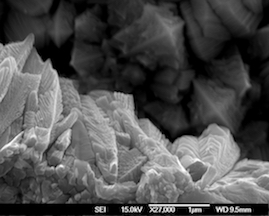
Research Objectives
Observing and identifying the presence of rutile nano-crystals is now a major objective for the materials characterization group.
1) Find the location of the co-deposited pyrolytic carbon in the material structure – e.g. is it on all exposed surfaces or preferentially on one phase or certain facets?
2) Develop a theory of the nanostructure development that incorporates all of the evidence and uses crystal growth modelling to test out the solid state physics ideas.
3) Understand the mechanisms responsible for the remarkable adhesion, durability and apparent ductile-like behavior which has been observed in all samples, both as-deposited and post annealing.
Numerical Modelling of the Pulsed-Pressure Process
A major research funding grant has been awarded to the AEMSLab for collaboration with Prof. J-S Wu's numerical modelling group in Taiwan. The FRST research grant was awarded in 2007 and will carry through 2011. The grant was for $891,000 and support a post-doctoral researcher, PhD students, a Masters student and a Final Year Project team.
Research Project details are available HERE
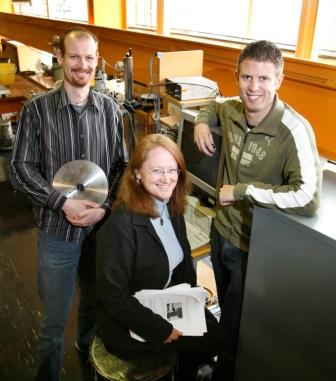
Dr. Mark Jermy, Assoc Prof Susan Krumdieck, Dr. Hadley Cave
Hypersonic Heat Shield Coatings
Dr. Krumdieck has been invited to participate in the National Hypersonic Science Research Center in the USA. The NHSC is funded by NASA and the US Air Force Office of Research and is a consortium of 8 top US Research Universities plus space contractor, Teledyne. The researchers are investigating different aspects of the enabling science for hypersonic vehicles. The types of materials, structures and controls for vehicles that could travel 10 times the speed of sound are not known. The aim of the NHSC is to advance the science enough to enable the technology. Dr. Krumdieck's role is to look at making high temperature and oxygen protection coatings for the structural components. At this time the materials of interest are SiC/SiC composites for the structure and coating of mullite (alumina silicate ceramic) on the ceramic matrix composite (CMC) structure.
Ever Wondered?, Season 1 Episode 7, Part 3, The Royal Society, TVNZ 7 in partnership with the Ministry of Research and Technology, (2010). Watch the Video
Our Changing World, 19 August 2010, Radio New Zealand National: listen to the PodCast (MP3)
TV3 News, SUN 30 May 2010, Watch the news story
ONE News, 01 June 2010, Breakfast Show, Watch the Interview
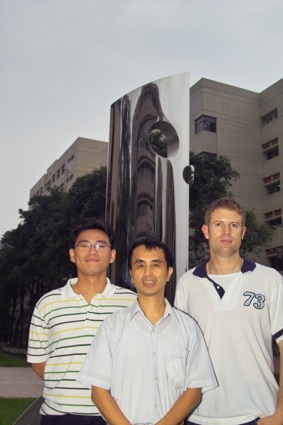
PhD Student, Prof. J-S Wu, Dr. Hadley Cave at NCTU Taiwan
NEW Commercialisation Funding for Industrial Wear Coatings
Pre-Seed Accelerator Fund (PSAF) funding from FRST has been awarded for a 6-month development project. The objective is to develop a protective ceramic coating for complex 3-D shaped metal components. The first target application is a wear protection coating for stainless steel water pumps. In most applications sand, volcanic ash or other particles are present in well water. These particles are harder than stainless steel so erode the impeller blades, reducing pumping energy efficiency and reducing service life. Alumina coatings are harder than silica sand, so will increase service life.
The Research Grant value is $94,763
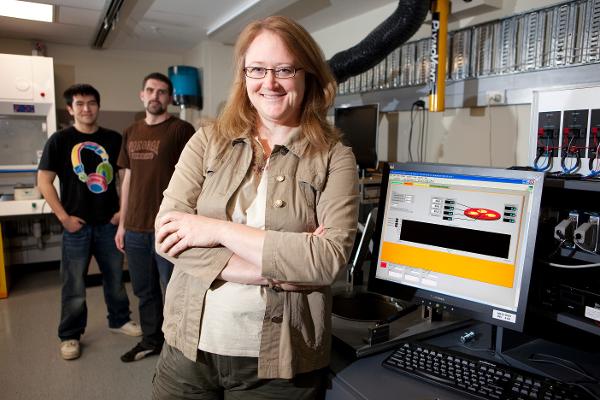
Dr. Krumdieck in the new AEMSLab wtih Darryl Lee and Ben Reyngould
